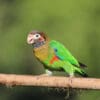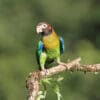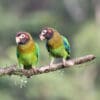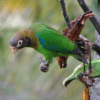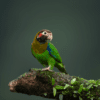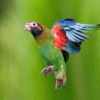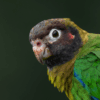Brown-hooded Parrot
Also known as:
Red-eared Parrot, Red-necklaced Parrot (P.h. coccinicollaris)
Also known as:
Red-eared Parrot, Red-necklaced Parrot (P.h. coccinicollaris)

Pyrilia

haematotis
Size:
21 cm (8.2 in)
Weight:
145-150 g (5.1-5.25 oz)
Subspecies including nominate:
one
Colour Adult:
P.h. haematotis: Both adults grey/brown crown to nape; white lores; brown/maroon ear coverts and area underneath eye; grey/brown cheeks and throat, turning to black towards sides of neck; olive/yellow hindneck, reaching to breast where turns to green; red axillaries and undersides; green tail tipped with blue and red at base. Beak horn-coloured with pale brown/yellow tinge. Eye ring white. Eye yellow.
P.h. coccinicollaris: Both adults red markings on lower foreneck and upper breast, often forming band in male, more faintly in female.
Colour Juvenile:
As in adults but head colour paler, breast more green and brown/maroon on ear coverts absent. Eye brown.
Call:
Calls made in flight are squeaky notes alternating with harsh sounds; also a variety of gurgles and warbles.
More Information:
Content Sources:
CITES
BirdLife International
Cornell Lab of Ornithology/Birds of the World
Parrots: A Guide to Parrots of the World, Juniper and Parr, 1998.
Parrots of the World, Forshaw, 2006. 2010 edition
Lexicon of Parrots, Thomas Arndt.
Captive Status:
Not usually seen in captivity.
Longevity:
—
Housing:
Flight minimum length 2.5 x 2 x 2 m (8 x 6.5 x 6.5 ft) temperature not less than 20 C (68 F).
Diet:
Fruits such as: apple, pear, banana, papaya, mango, cactus fruits; vegetables such as: carrots, celery, green beans and peas in the pod; lory or lactose-free baby cereal; seed mix such as: safflower, oats, canary, millet and some hemp and sunflower; sprouted seeds/beans in spring and summer; vitamins and minerals, especially C; complete pellet.
Enrichment:
Provide fresh, unsprayed flowering and budding branches.
Nest Box Size:
Vertical box 25 cm x 25 cm x 60 cm (10 x 10 x 24 in).
Clutch Size:
Not recorded.
Fledging Age:
—
Hatch Weight:
—
Peak Weight:
—
Weaning Weight:
—
World Population:
50,000-500,000 mature individuals, decreasing.
IUCN Red List Status:
Least Concern
CITES Listing:
Appendix II
Threat Summary:
Not globally threatened. Undergoing a moderate decline over much of its range due to deforestation. Over three generations, tree cover within its range is lost at a rate of 14%. Apart from forests, the species is also found in edge habitat and mature secondary growth. Is only marginally affected by trapping or persecution. Population declines are therefore unlikely to exceed 20% over three generations.
Range:
P.h. haematotis: S Mexico south to W Panama.
P.h. coccinicollaris: E Panama and NW Colombia.
Habitat:
Found up to 1200 m (3936 ft) in dense primary rainforest, including low-elevation cloud forest, forest clearings with grass and scattered trees, and cultivated areas.
Wild Diet:
Feeds on fruits and seeds of forest trees and epiphytes including Ficus, Heliocarpus, Croton, Erythrina and on the green leaves of some types of mistletoe.
Ecology and Behaviour:
Found in flocks of 6-15 birds, but not usually larger numbers. Forages for food at all levels of the canopy, and occasionally cornfields. May socialize with other parrots and toucans.
Clutch and Egg Size:
Not recorded.
Breeding Season:
February, Yucatan; May-July, Guatemala; August, Panama. Nest is in tree hollow.
Related Links:
—

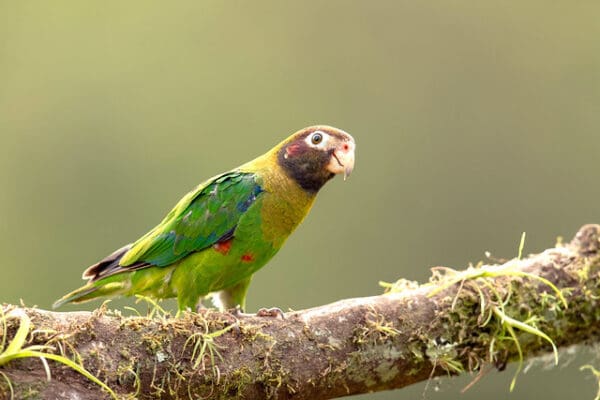
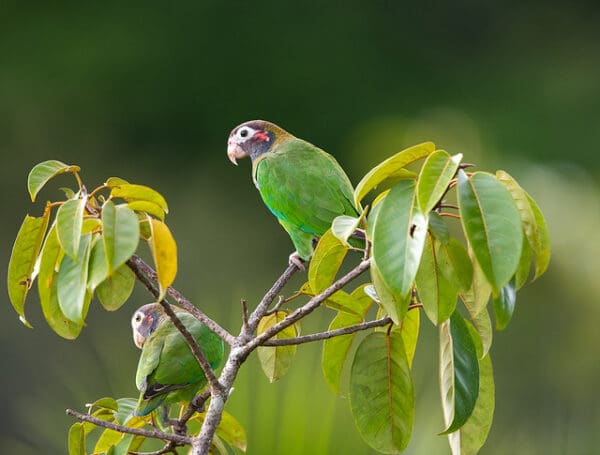
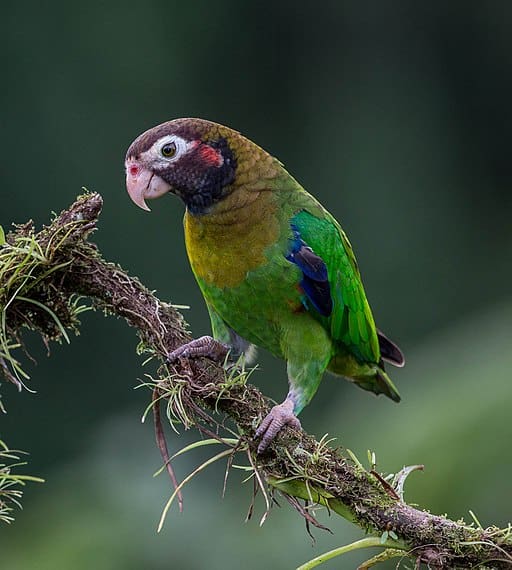
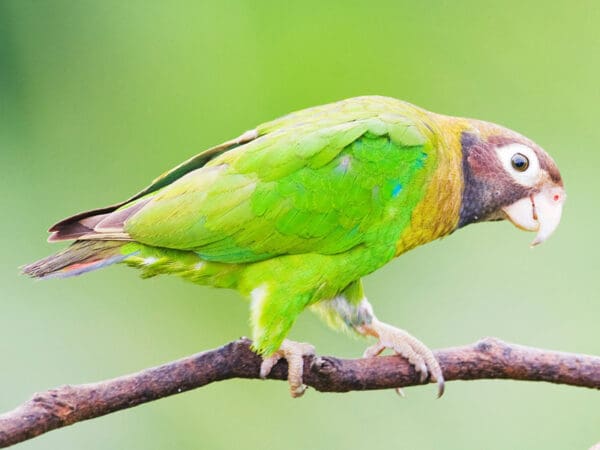
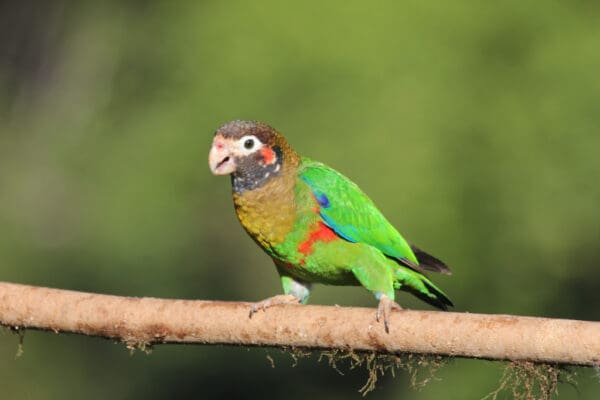
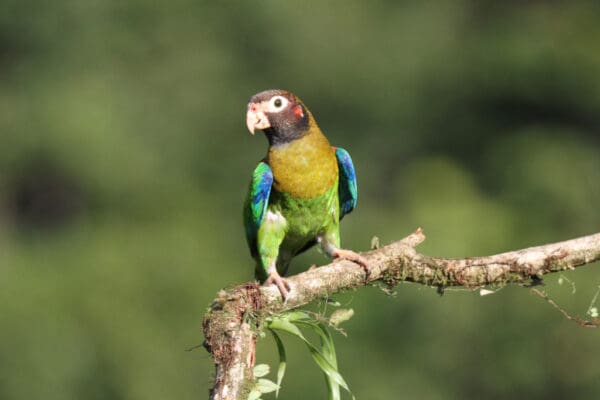
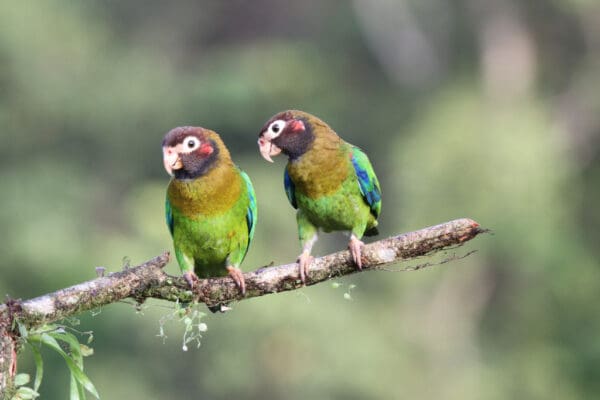
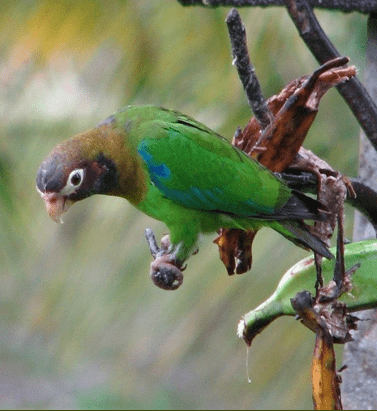
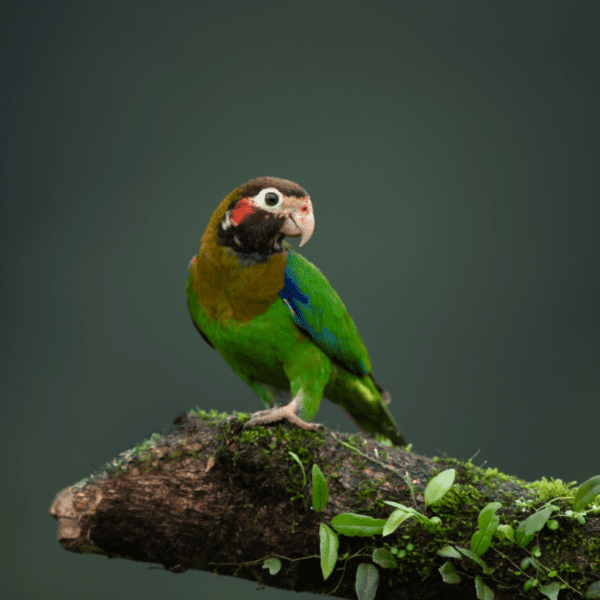
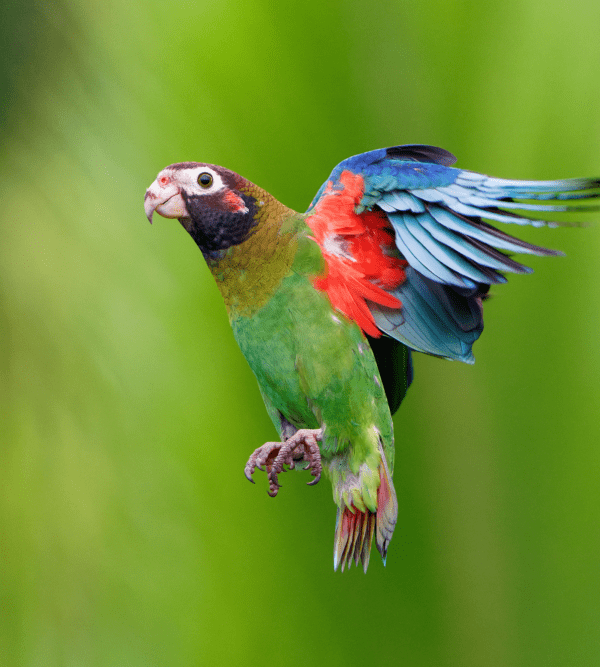
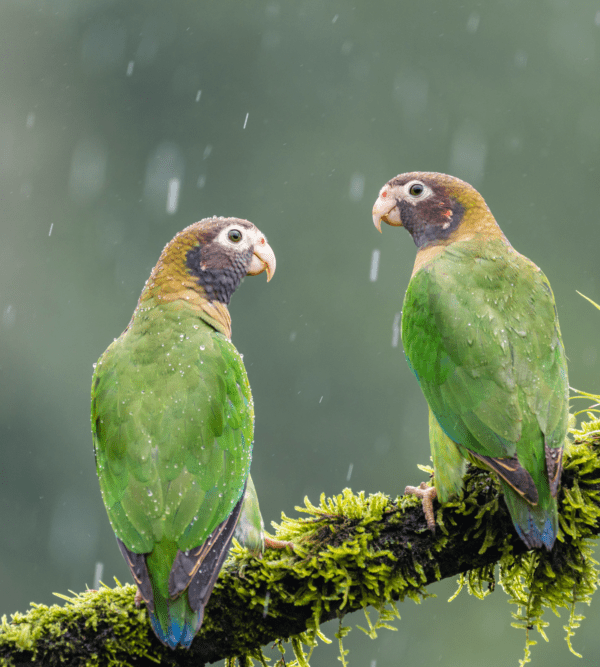
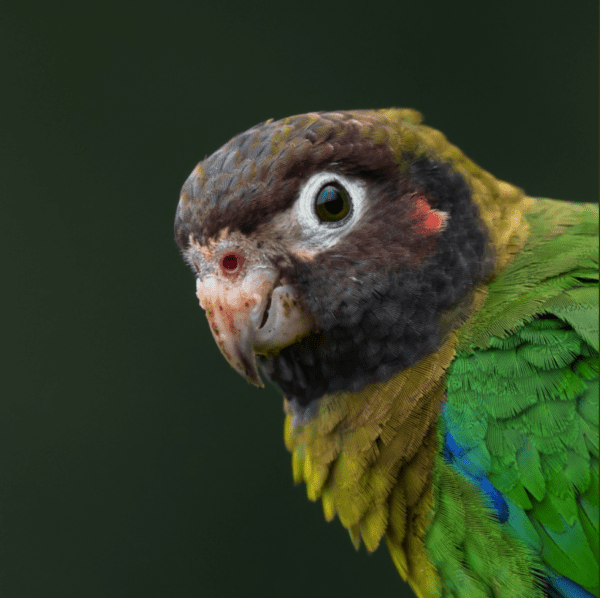

![© Mick Thompson [CC BY-SA 2.0] via Flickr A wild Brown-hooded Parrot perches on a vegetation-covered branch](https://parrots.org/wp-content/uploads/2023/01/wpt_Brown-hooded-Parrot_1389-12-100x100.jpg)
![© Doug Greenberg [CC BY-SA 2.0] via Flickr Wild Brown-hooded Parrots perch in a leafy tree](https://parrots.org/wp-content/uploads/2023/01/wpt_Brown-hooded-Parrot_1389-11-100x100.jpg)
![© Andy Morffew [CC BY 2.0] via Flickr A wild Brown-hooded Parrot perches on a vegetation-covered branch](https://parrots.org/wp-content/uploads/2023/01/wpt_Brown-hooded-Parrot_1389-7-100x100.jpg)
![© Eduardo Mariano Rivero (Eduardo Rivero) of Argentina (carolinabirds.org) [CC BY-SA 3.0] via Wikimedia Commons A wild Brown-hooded Parrot perches on a branch](https://parrots.org/wp-content/uploads/2023/01/wpt_Brown-hooded-Parrot_1389-6-100x100.jpg)
